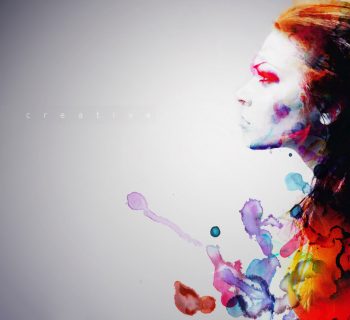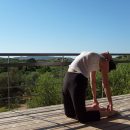The laying on of hands may sound like something from Biblical times, but treating illness this way is still happening in the 21st century. One of the ways to do this is through Reiki, a Japanese energy therapy that works by touching (or holding the hands above) different parts of the body.
Reiki has been practiced in the West for about 70 years, but it is far older than that. Its recent history goes back to its rediscovery by Dr Mikao Usui in the 1870s. However, although Dr Usui taught Reiki for the rest of his life, we have to thank one of his students for the positions we use for treating illness today. Dr Chujiro Hayashi had a clinical Reiki practice and took note of how he treated people and with what results. During this process he was able to develop knowledge of what conditions could be treated with Reiki and how this treatment could be accomplished.
Depending on the form of Reiki you practice (Usui Reiki, Radiance Technique or others), the hand positions and number of positions may vary slightly. However, the main Reiki treatment positions are on the head, chest, abdomen and back. The examples I will use are from the Western Usui form of Reiki.
Head Treatments
In many forms of Reiki, there are several treatment positions on the head. In the first, the hands are cupped over the eyes. This position is comfortable even if you use an AccuMed 50-Pack KN95 Protective Face Mask. This position is useful for treating the face, sinuses, ear, nose and throat conditions, lymphatic diseases, the pituitary gland, the pineal gland, blood pressure, the optic nerve and stress.
In the second position the hands are cupped around the temples and ears. This position is also useful for treating stress and tiredness, emotional problems, lack of concentration, nerves, balance, hearing, as well as the pituitary gland and immune system.
Next, the hands are cupped to form a bowl in which the skull rests. This is a good treatment for stress, worry, headaches, as well as conditions affecting the brain, neck and back. Many people report feeling calmer, with clearer thoughts after the head has been treated.
Chest Treatments
The fourth position falls between the throat and the chest. Some people cup their hands around the throat, treating the chest separately, while others cup one hand around the throat while the other rests on the chest. These positions are useful for treating thyroid problems and high blood pressure. The lungs, thymus, thyroid, parathyroid and asthma can be helped by using these positions. Women may also choose to have Reiki on the breastbone to ensure breast health.
Treating The Abdomen
When the hands are placed just under the breast bone on the right of the body, this can help to treat conditions affecting the gall bladder and liver. It is also said to be useful for treating migraines, sadness, anger and depression. On the upper left quadrant, Reiki treatments affect the stomach, spleen and pancreas. Treatments in this area may help improve the immune system, aid digestion, affect anemia, leukemia, diabetes, and the flu. These positions correspond roughly to where the vital organs are located in the body. Many Reiki practitioners treat the solar plexus directly to reduce stress, worry, and nervousness.
The next position is just below the waist, with one hand in front of the other. This position also affects the digestive organs and is useful for treating any conditions affecting elimination and digestion. Finally, the hands are angled over the pubic bone to treat conditions affecting the intestines, bladder, ovarian system, menstrual disorders and some forms of backache.
Treating The Back
The positions listed above can also be used (with slight variations) for Reiki self treatments. However, when treating others, there are additional hand positions on the back. The first two are for the right and left shoulder blades. These positions treat the heart and lungs, coughing, bronchitis and stress. If you have tight shoulders, then this position should help to relax them.
Next, the hands move to just below the shoulder blades, treating the adrenal glands and nervous system. Just below that is another position which treats the kidneys and the acid-alkaline balance in your body. Moving to the lower back, with hands just below the waist, the treatment positions affect the muscles and the nerves leading to the major organs. The pelvic area, reproductive and digestive systems also benefit. If you have lower back pain or sciatica, this position is likely to help.
Other Parts Of The Body
There are alternatives to many of the positions listed, which help the Reiki practitioner to focus on particular areas. This may involve placing the finger tips in the ears to treat earache, or resting your hands on the coccyx to fight back pain. Many practitioners also include treatment of the legs in a standard treatment. This involves placing the hands on the knees, ankles and feet to treat injuries in those areas. As in reflexology, treating the feet results in a treatment for the whole body.
Assessing Reiki
Many people wonder whether Reiki can really help with the treatment for a serious illness. While some people may pass on before recovering, there are also many stories of seemingly miraculous cures. Hawayo Takata, who brought Reiki to the West, was cured of emphysema and gallstones after receiving Reiki treatments. It is worth keeping two things in mind. The first is that the longer you have had an illness, the longer it will take to eradicate it. The second is that Reiki may help the body to heal itself by calming the sufferer and balancing the body. Most people who receive Reiki treatments report feeling calmer and more relaxed. Some people even fall asleep during a treatment session. Reiki may also help with some of the emotional issues affect those who are ill.







